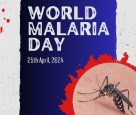
Children infected with Omicron Covid variant remain infectious for 3 days: Study
PTI, Oct 24, 2023, 2:36 PM IST

Representative image (source: Pinterest)
Children infected with the Omicron variant remain infectious for three days on average after testing positive for the SARS-CoV-2 virus, according to a study.
Researchers at the University of Southern California (USC) and Stanford University in the US noted that school policies that require students with COVID-19 to stay out of the classroom for five days are more than sufficient.
”We are basically saying five days is more than sufficient; public health and education leaders may consider shorter durations,” said study co-author Neeraj Sood, Director of the COVID-19 Initiative and a senior fellow at the USC Schaeffer Center.
The study, published in the journal JAMA Pediatrics, found that the median time of infectivity was three days, with 18.4 per cent and 3.9 per cent of children still infectious on day five and day 10, respectively.
The researchers also found no association between how long children were infectious and whether they were vaccinated, suggesting return-to-school policies may not need discriminate by vaccine or booster status.
The study seeks to inform policymakers who grapple with how long children must isolate when they contract COVID-19. Such self-isolation policies, aimed at halting the spread of the virus, can negatively interrupt children’s education.
”We want to protect the other children in the school who could potentially get infected, but at the same time, we don’t want to disrupt education for the child who is infected, given the amount of disruption that’s already happened,” said Sood.
”The duration of infectivity is an important parameter into figuring out what the optimal duration of self-isolation should be,” he added.
The researchers partnered with a virus testing company and examined nasal swabs from 76 children in Los Angeles County who were between the ages of 7 and 18 and tested positive for COVID-19.
Survey participants provided samples during five home visits over a 10-day period and samples were examined in a lab to find evidence of cell death, a sign of infectivity. All participants were infected with the Omicron variant of COVID-19.
”We wanted to capture how infectivity changed over the 10-day window,” said study lead author Nikhilesh Kumar, a Doctor of Medicine student at the USC Keck School of Medicine.
The findings are consistent with previous research on adults who contracted the Omicron variant, which showed no association between vaccination status and time of infectivity.
That research, published in the New England Journal of Medicine, showed adults with Omicron were infected for a slightly longer duration, with a median time of five days, the authors noted.
The team called for further research so that policymakers can consider adjusting the time students must stay out of the classroom.
Children infected with the Omicron variant remain infectious for three days on average after testing positive for the SARS-CoV-2 virus, according to a study.
Researchers at the University of Southern California (USC) and Stanford University in the US noted that school policies that require students with COVID-19 to stay out of the classroom for five days are more than sufficient.
”We are basically saying five days is more than sufficient; public health and education leaders may consider shorter durations,” said study co-author Neeraj Sood, Director of the COVID-19 Initiative and a senior fellow at the USC Schaeffer Center.
The study, published in the journal JAMA Pediatrics, found that the median time of infectivity was three days, with 18.4 per cent and 3.9 per cent of children still infectious on day five and day 10, respectively.
The researchers also found no association between how long children were infectious and whether they were vaccinated, suggesting return-to-school policies may not need discriminate by vaccine or booster status.
The study seeks to inform policymakers who grapple with how long children must isolate when they contract COVID-19. Such self-isolation policies, aimed at halting the spread of the virus, can negatively interrupt children’s education.
”We want to protect the other children in the school who could potentially get infected, but at the same time, we don’t want to disrupt education for the child who is infected, given the amount of disruption that’s already happened,” said Sood.
”The duration of infectivity is an important parameter into figuring out what the optimal duration of self-isolation should be,” he added.
The researchers partnered with a virus testing company and examined nasal swabs from 76 children in Los Angeles County who were between the ages of 7 and 18 and tested positive for COVID-19.
Survey participants provided samples during five home visits over a 10-day period and samples were examined in a lab to find evidence of cell death, a sign of infectivity. All participants were infected with the Omicron variant of COVID-19.
”We wanted to capture how infectivity changed over the 10-day window,” said study lead author Nikhilesh Kumar, a Doctor of Medicine student at the USC Keck School of Medicine.
The findings are consistent with previous research on adults who contracted the Omicron variant, which showed no association between vaccination status and time of infectivity.
That research, published in the New England Journal of Medicine, showed adults with Omicron were infected for a slightly longer duration, with a median time of five days, the authors noted.
The team called for further research so that policymakers can consider adjusting the time students must stay out of the classroom.
Children infected with the Omicron variant remain infectious for three days on average after testing positive for the SARS-CoV-2 virus, according to a study.
Researchers at the University of Southern California (USC) and Stanford University in the US noted that school policies that require students with COVID-19 to stay out of the classroom for five days are more than sufficient.
”We are basically saying five days is more than sufficient; public health and education leaders may consider shorter durations,” said study co-author Neeraj Sood, Director of the COVID-19 Initiative and a senior fellow at the USC Schaeffer Center.
The study, published in the journal JAMA Pediatrics, found that the median time of infectivity was three days, with 18.4 per cent and 3.9 per cent of children still infectious on day five and day 10, respectively.
The researchers also found no association between how long children were infectious and whether they were vaccinated, suggesting return-to-school policies may not need discriminate by vaccine or booster status.
The study seeks to inform policymakers who grapple with how long children must isolate when they contract COVID-19. Such self-isolation policies, aimed at halting the spread of the virus, can negatively interrupt children’s education.
”We want to protect the other children in the school who could potentially get infected, but at the same time, we don’t want to disrupt education for the child who is infected, given the amount of disruption that’s already happened,” said Sood.
”The duration of infectivity is an important parameter into figuring out what the optimal duration of self-isolation should be,” he added.
The researchers partnered with a virus testing company and examined nasal swabs from 76 children in Los Angeles County who were between the ages of 7 and 18 and tested positive for COVID-19.
Survey participants provided samples during five home visits over a 10-day period and samples were examined in a lab to find evidence of cell death, a sign of infectivity. All participants were infected with the Omicron variant of COVID-19.
”We wanted to capture how infectivity changed over the 10-day window,” said study lead author Nikhilesh Kumar, a Doctor of Medicine student at the USC Keck School of Medicine.
The findings are consistent with previous research on adults who contracted the Omicron variant, which showed no association between vaccination status and time of infectivity.
That research, published in the New England Journal of Medicine, showed adults with Omicron were infected for a slightly longer duration, with a median time of five days, the authors noted.
The team called for further research so that policymakers can consider adjusting the time students must stay out of the classroom.
Children infected with the Omicron variant remain infectious for three days on average after testing positive for the SARS-CoV-2 virus, according to a study.
Researchers at the University of Southern California (USC) and Stanford University in the US noted that school policies that require students with COVID-19 to stay out of the classroom for five days are more than sufficient.
”We are basically saying five days is more than sufficient; public health and education leaders may consider shorter durations,” said study co-author Neeraj Sood, Director of the COVID-19 Initiative and a senior fellow at the USC Schaeffer Center.
The study, published in the journal JAMA Pediatrics, found that the median time of infectivity was three days, with 18.4 per cent and 3.9 per cent of children still infectious on day five and day 10, respectively.
The researchers also found no association between how long children were infectious and whether they were vaccinated, suggesting return-to-school policies may not need discriminate by vaccine or booster status.
The study seeks to inform policymakers who grapple with how long children must isolate when they contract COVID-19. Such self-isolation policies, aimed at halting the spread of the virus, can negatively interrupt children’s education.
”We want to protect the other children in the school who could potentially get infected, but at the same time, we don’t want to disrupt education for the child who is infected, given the amount of disruption that’s already happened,” said Sood.
”The duration of infectivity is an important parameter into figuring out what the optimal duration of self-isolation should be,” he added.
The researchers partnered with a virus testing company and examined nasal swabs from 76 children in Los Angeles County who were between the ages of 7 and 18 and tested positive for COVID-19.
Survey participants provided samples during five home visits over a 10-day period and samples were examined in a lab to find evidence of cell death, a sign of infectivity. All participants were infected with the Omicron variant of COVID-19.
”We wanted to capture how infectivity changed over the 10-day window,” said study lead author Nikhilesh Kumar, a Doctor of Medicine student at the USC Keck School of Medicine.
The findings are consistent with previous research on adults who contracted the Omicron variant, which showed no association between vaccination status and time of infectivity.
That research, published in the New England Journal of Medicine, showed adults with Omicron were infected for a slightly longer duration, with a median time of five days, the authors noted.
The team called for further research so that policymakers can consider adjusting the time students must stay out of the classroom.
Udayavani is now on Telegram. Click here to join our channel and stay updated with the latest news.
Top News
Related Articles More

Nearsightedness is at epidemic levels – and the problem begins in childhood

Study finds genetic basis for link between depression, heart disease

World Malaria Day: WHO calls for equitable health access

What role does genetics play in breast cancer? How can genetic testing help with early breast cancer diagnosis?

Father’s diet can affect anxiety in sons, metabolism in daughters: Study in mice finds
MUST WATCH
Latest Additions

With impact player, it is getting difficult each and every day: Pant

Congress in K’taka to stage protest on Apr 28 against ‘paltry’ drought relief given by Centre

McGurk, Stubbs rock as DC beat MI by 10 runs

‘Shaurya Smarak’ of three fallen Army officers unveiled in Jammu

BJP drops Poonam Mahajan, picks 26/11 prosecutor Ujjwal Nikam from Mumbai North Central seat























